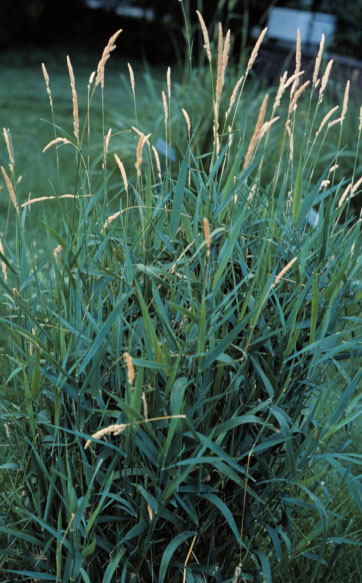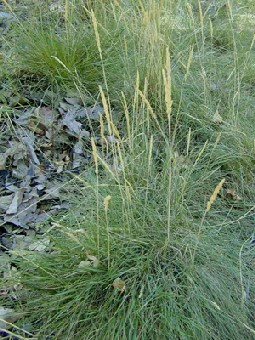Introduced species: Reed canarygrass (Phalaris arundinacea L.)
Characteristics: Reed canarygrass is a tall, perennial grass species, growing up to 2.5 m (8 ft), with erect, hairless stems. Its leaves may be up to 40 cm (16″) long and 2.5 cm (1″) wide, with a prominent midrib on the underside. Reddish-purple flowers form from June to August in a dense column (“panicle”), 8 – 18 cm (3 to 7″) tall; as the seeds mature, the panicle closes and turns straw-colored.
Spread: Reed canarygrass can spread both by prolific seed production and through its aggressive underground rhizome system. Due to its prolific growth, reed canarygrass can develop into dense, monotypic stands. Reed canarygrass monocultures may remain dominant in wetlands for decades, reducing the diversity of wetland flora, especially late-season emergent species, which has exacerbated the degradation of wetlands across North America.
Control: Efforts to control the spread of reed canarygrass have included tilling, flooding, herbicides, defoliation (mowing, grazing), shading, biocontrol (release of pathogens), removal of topsoil, and combinations of the above measures. Maintenance of consistent water levels through winter and early spring, in conjunction with other control measures, may also prevent the spread of reed canarygrass. Control of large-scale infestations is quite difficult, and typically requires a combination of several methods applied over multiple growing seasons.
Native replacement: Tufted hairgrass (Deschampsia cespitosa) is a native bunchgrass that grows well in the moist, sunny areas preferred by reed canarygrass.


